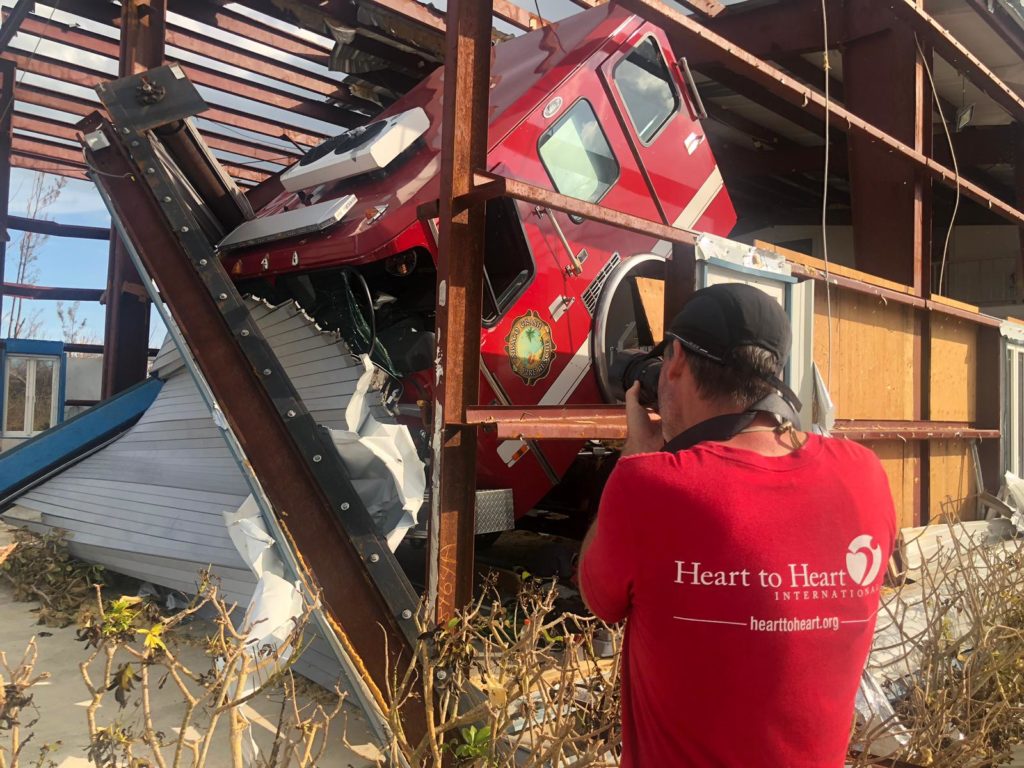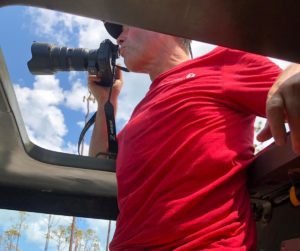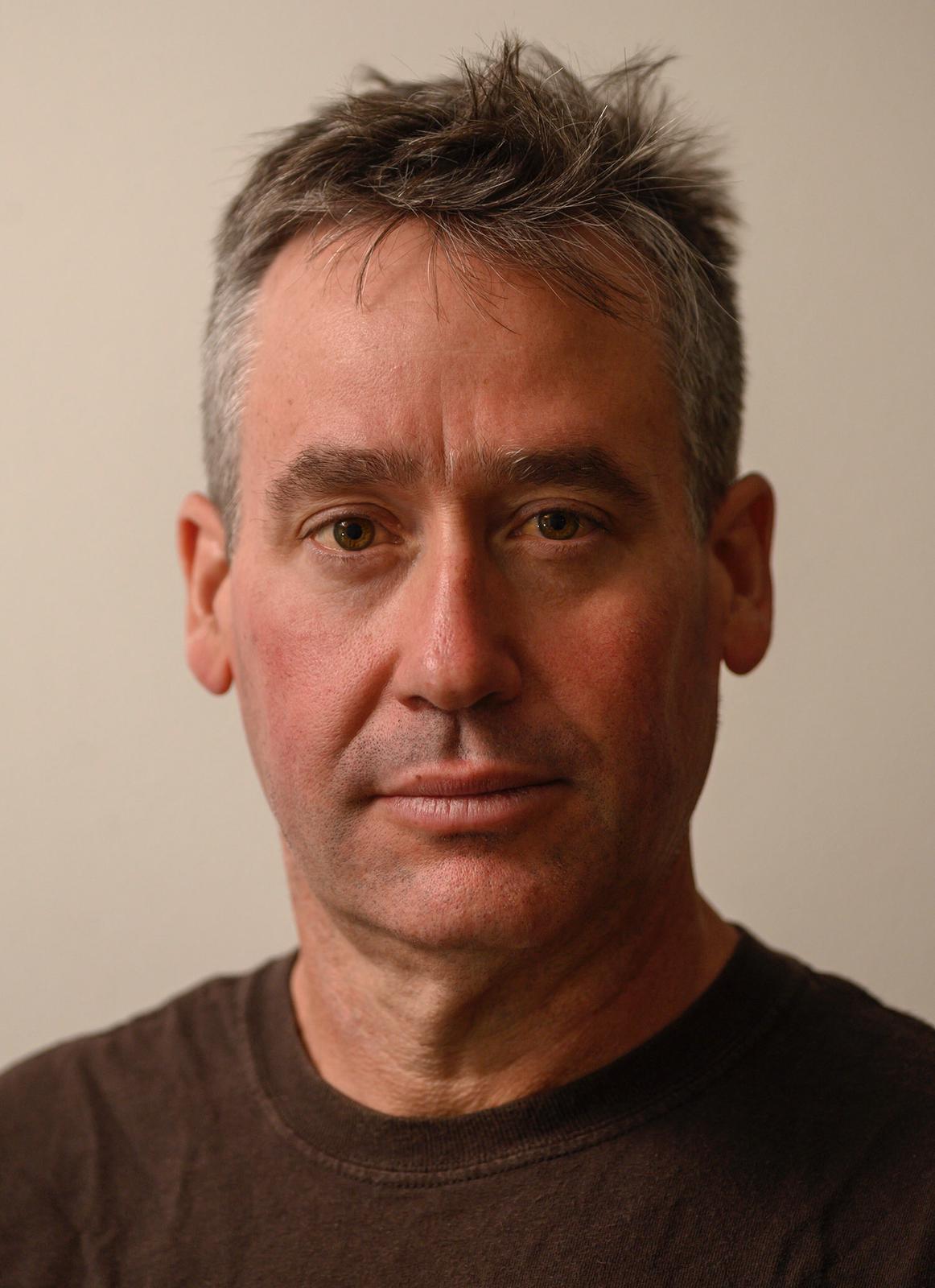Robin Loznak deployed as a volunteer photographer with the HHI disaster response team to the Bahamas last week. Robin took some amazing photos in some incredibly difficult conditions. Thank you, Robin, for capturing the stories of the people affected by Hurricane Dorian.
Below is Robin’s story.
I’m currently returning to Oregon from my time working with Heart to Heart International (HHI) as a volunteer photographer and communications technician during our medical response to Hurricane Dorian in the Bahamas. HHI is a global non-governmental humanitarian organization based near Kansas City.
During my initial deployment 11 days ago, I traveled to Atlanta and met up with a team of responders headed for Florida. As Dorian approached the east coast the team continued south and staged in central Florida. We watched on CNN and the Weather Channel as Dorian approached the Bahamas and stopped all essential forward movement. The category 5 hurricane churned, ripped and flattened all in its path as it moved at a rate as slow as one mile per hour over Abaco Island and the surrounding area.
A small fact-finding team from HHI was mobilized and sent to the island nation. As the extent of the devastation was revealed, a slightly larger advance team was organized. I was diverted from Florida and flew from Orlando to Nassau on Sept. 5. Nassau was essentially bypassed by the storm with only minor flooding. The damage to the Bahamas is concentrated to Abaco and the eastern end of Grand Bahama Island.
After what seemed like ages, but was actually only about 24 hours, myself, Dr. George Poehlman, and disaster response manager and logistics specialist Joan Kelly talked our way onto a small plane headed for Marsh Harbor on Abaco. From the air, the destruction is nearly overwhelming. All green leaves have been stripped, and most trees are broken or toppled. The buildings in the towns and along the coast are crushed, and debris spreads out from the settlements like confetti or shrapnel from a bomb blast. The loss of life on Abaco is extensive and still being assessed.
At the airport in Marsh Harbor we were greeted by a roofless and unrecognizable terminal and overturned vehicles. Hundreds of anxious people waited in the hot sun for evacuation by air. Our amazing logistics operator located our transportation. We piled into a pickup and headed for the harbor with the hope that a rumored boat would be available to take us to one of the hard-hit small islands near Abaco. At the harbor more evacuees waited in the sweltering sun for the possibility of escape by ship.
Aboard a damaged, but proud private boat we motored to Man O War Cay. The small island has a long history and was one of the early loyalist settlements in the Abaco region. The damage on the island was again mind boggling. Overturned and half sunken boats block much of the port.On shore, large sailboats, fishing and pleasure boats are churned together with the remains of homes. All structures on the island are damaged, some wiped clean off their foundations with only small pieces remaining. The majority of the structures appear heavily damaged, but many homes look repairable.
We set up our micro medical clinic in the historic New Life Bible Church in the center of the island. The building has three walls standing and most of the roof is intact. As it should be, the church is a rallying point for the strong and proud islanders who remain. Dr. George treated a steady stream of men and women for mostly minor cuts and puncture wounds. Many patients had lost or were running low on their medication. We brought a small but very well organized medical kit with us. Dr. George had all he needed and treated the people with gentle hands, compassion and a steady stream of life-saving antibiotics.
We worked late into the night. As the tropical sun set and the cooling breezes stirred, a family came to visit us in the church for treatment and news of the outside. As Dr. Geoge worked with one of the adults, their teenage son Colin-Ray Blake Albury, 17, began cleaning the dust and debris from the wooden altar standing firm before the toppled back wall of the church. After carefully wiping the wooden crucifix Albury said through strong emotions that his great-great grandfather built the altar by hand and his family had attended the church for generations.
The next day we relocated back to Abaco Island via helicopter. Our job now was to find a location for a more sustained medical clinic and make it a base for an expanded response from HHI. The team ended up in a medical clinic in Treasure Cay. The townsite itself was primarily a resort area. Most of the population had evacuated and the majority of the buildings and homes appeared damaged beyond repair. In the vicinity of Treasure Cay are several underdeveloped communities populated by Haitian immigrants. Many of the residents are non-English speaking. The remaining people in Treasure Cay and the residents in the outlying areas are in desperate need of medical care.
The established, but unstaffed clinic was a good fit for Heart to Heart’s medical outreach. The facility acted as a food, drinking water, security, and distribution point for the community. A steady stream of patients showed up for the no-cost treatment provided by the skilled HHI staff. As the days passed the team quickly expanded with two more doctors and several nurses. We traveled to nearby communities and set up “popup” clinics.
On Saturday, Sept. 7, Dr. Poehlman and Dr. Rick Randolph stabilized a critically sick man and coordinated an airlift out of Treasure Cay for both the man and his wife. The airlift transport was provided by a U.S. Customs and Border Control Blackhawk helicopter. Just one example of how organizations working together can provide care to people in need.
As my time in the Bahamas comes to an end today, Heart to Heart has ramped up the response with more doctors, nurses and a supply chain for medical supplies and support materials. The team is finalizing the arrangements for a mobile desalination water plant to be established near the clinic in Treasure Cay.
The road to recovery will be long for the survivors of Hurricane Dorian in the Bahamas. The people are strong. With the support of their family, neighbors, government, and the world community, they will rebuild.



